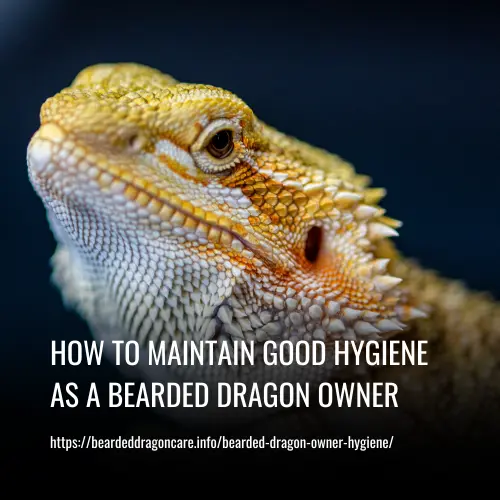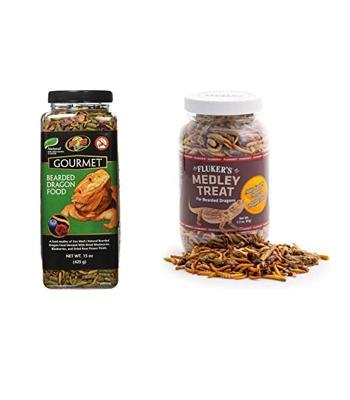Bearded dragons make for great pets, but it’s important to ensure you’re getting a healthy one. Do you know what exactly to look for in a bearded dragon?
Having a beautiful, healthy bearded dragon requires more than just choosing the cutest one in the store. While any pet needs love and care, there are some key elements to consider when selecting a healthy beardie or one that will have health problems later on.
In this article, I’ll tell you what to look for in a healthy bearded dragon so that you can bring home an amazing pet that will thrive!
It is important to be able to tell whether a Bearded dragon is healthy or not. Although sick or diseased individuals might have less visible signs, a healthy Bearded dragon will always have the following characteristics:
- Alert attitude
- Willingness to eat
- Show basking behaviour
- No excretions to the eyes, nose, and mouth
- Clean vent
- Upright posture
- Filled out belly
- Good Coloration & Texture
- Absence of swollen toes and tails
Remember that Bearded dragons are diurnal creatures, meaning that they are mostly active during the day. As soon as it gets dark, most Bearded dragons will fall asleep and it is normal for them not to show daytime behaviours.
Alert attitude
When there is sound and/or movement around, a healthy Bearded dragon should always be alert and bright. They should be curious to see what is going on. In most cases moving objects (e.g. a person, a hand, etc.) should be followed, even if it is only by moving the head toward the object.
Willingness to eat
A healthy Bearded dragon should almost always be willing to eat what is to offer, especially moving prey. If the prey is large enough, most Bearded dragons will dash toward it to show their interest. Healthy Bearded dragons should also be willing to eat greens.
Show basking behaviour
Basking behaviour is essential for Bearded dragons to metabolize their food and absorb heat and ultraviolet. This is often seen after a meal or during times when there is not a lot to do. Healthy Bearded dragons should also spend most of the day basking in the basking area. Also, see creating a basking area for Bearded dragons for more information.
No excretions from eyes, nose, and mouth
Many Bearded dragon diseases are indicated by excretion from the eyes, nose, and/or mouth. Excretions will usually be in the form of a fluid substance collecting around the affected area, but can also be seen as a sore, a crust, or the collection of dirt. Affected eyes can be closed up and nostrils can be blocked up. Excretions are often indicative of infections and/or injuries in those areas. Healthy Bearded dragons should be free of any type of abnormality around these areas. Also, see ‘mouth rot’ in Bearded dragons for more information.
Clean vent
The vent area of Bearded dragons are the combined opening for defecating and expelling eggs. It is also the opening through which the sexual organs are extruded for copulation. In healthy Bearded dragons, the vent area should be clean and dry. It should be without swellings and coloration. A dirty vent is usually an indication of diarrhea and swellings are an indication of injury or that something might be stuck in that area. Also, see Bearded dragon breeding for more information.
Upright posture
Healthy Bearded dragons with well-maintained muscle and bone structure should be able to sit upright. By doing so, they are able to perform normal behaviours (such as courting, head bobbing, and threatening behaviour) indicating that they are healthy. When the body and front legs are weak, it is usually an indication that something is wrong
These are the main characteristics of a happy, healthy pet Bearded dragon.
Filled out belly
A filled belly is an indication that a Bearded dragon is well-fed (and is eating). The opposite is true in the case where Bearded dragons are eating too little. Anorexia (not eating or eating less) is a common sign that a Bearded dragon is not healthy. Apart from the belly, a good body condition score is indicated by a fleshy tail and legs, well-developed muscles on the head, and the absence of a visible spine and ribs.
Good Coloration & Texture
Make sure that your dragon’s skin has a normal coloration with no lumps or lacerations. The skin should also have a smooth texture as opposed to bumpy, dry patches.
Absence of swellings in/on toes and tail
Swellings on the toes and tail is very often an indication of shedding problems. Healthy Bearded dragons in the correct environment should shed without problems. Common reasons include incorrect humidity, bacterial infections, skin parasites, and almost everything that can cause stunted growth. Also, see safe and effective ways to help a shedding Bearded dragon for more information. Swellings on the tail and toes can also be an indication that a Bearded dragon is bitten by other Bearded dragons.
FAQs
Do Bearded Dragons Have Feelings?
Bearded dragons have a limited range of emotions due to an underdeveloped hypothalamus; these include fear, aggression, and pleasure.
Can Bearded Dragons Show Love And Affection?
Bearded Dragons are unique among reptiles for expressing love for their human owners, making them ideal exotic pets if that’s what you’re looking for.
Is It Ok To Kiss And Cuddle My Bearded Dragons?
When handling a bearded dragon, don’t kiss or snuggle it and avoid eating or drinking while near it. This can spread salmonella bacteria and make you sick.
Conclusion
In conclusion, selecting a healthy bearded dragon is one of the most important steps in caring for them. By looking for certain signs, such as bright eyes and alertness, you can make sure that your new pet is well-adapted to its environment and will provide years of companionship. Not only that, but the dragon should also have nice vibrant colors so you can admire its beauty.

